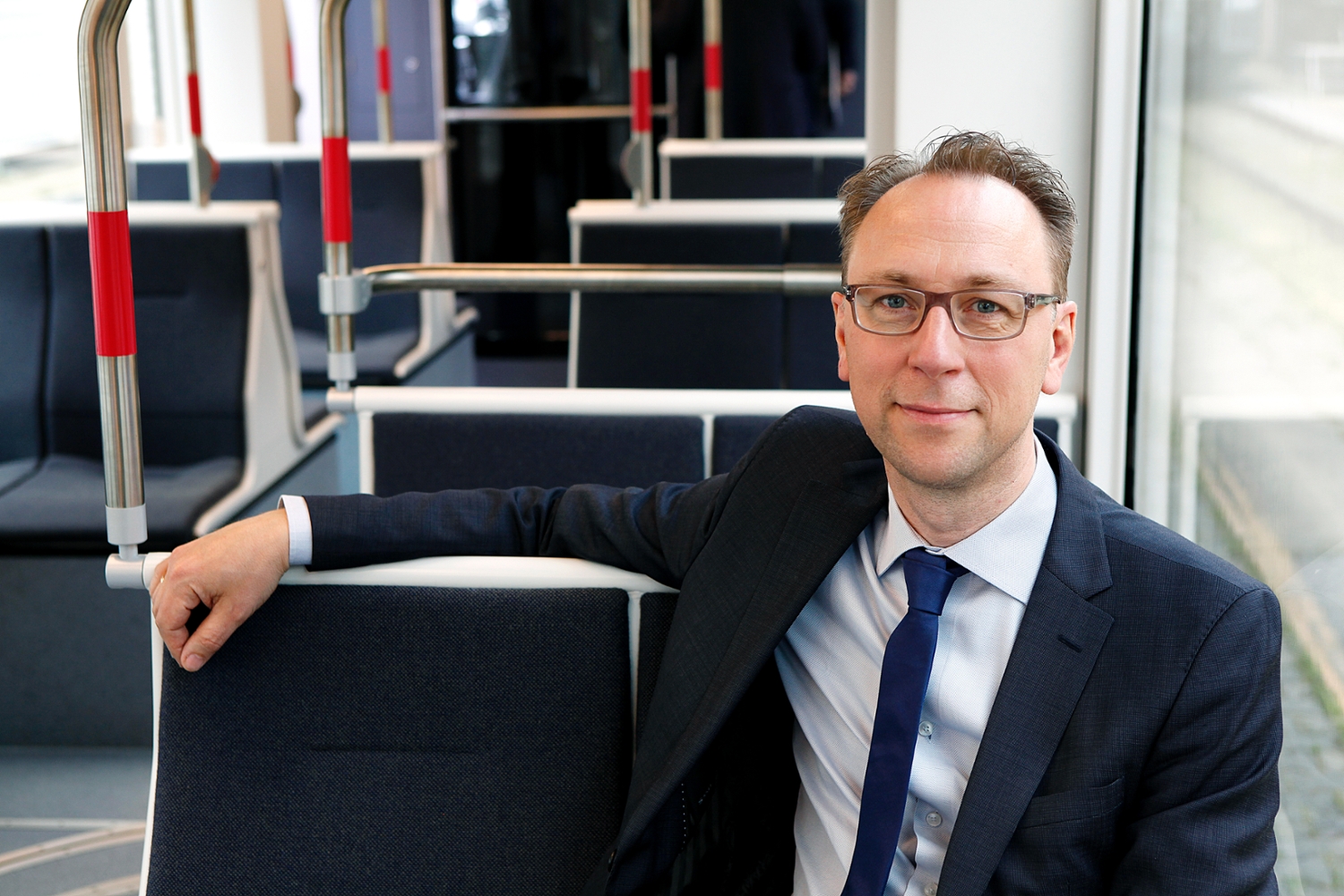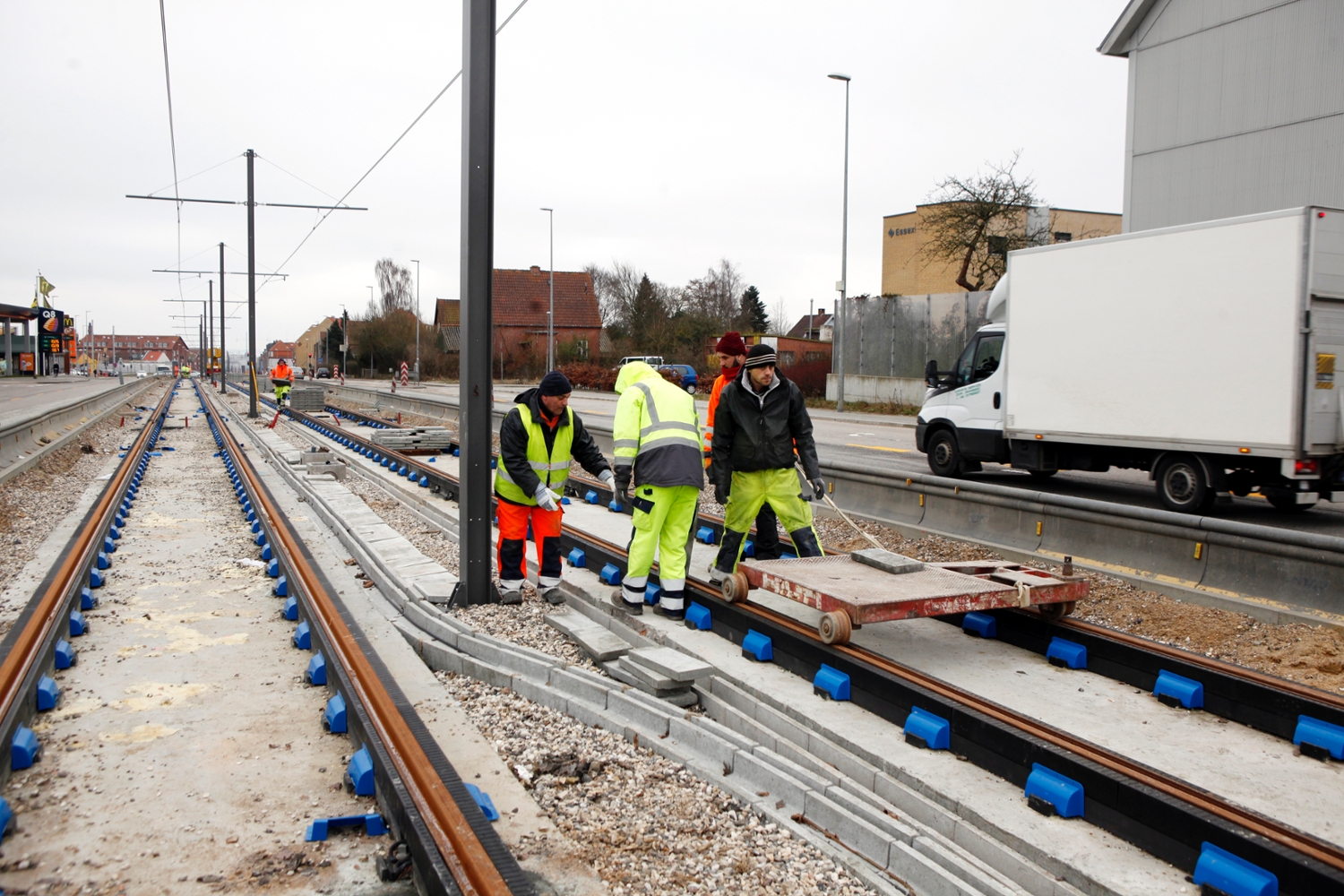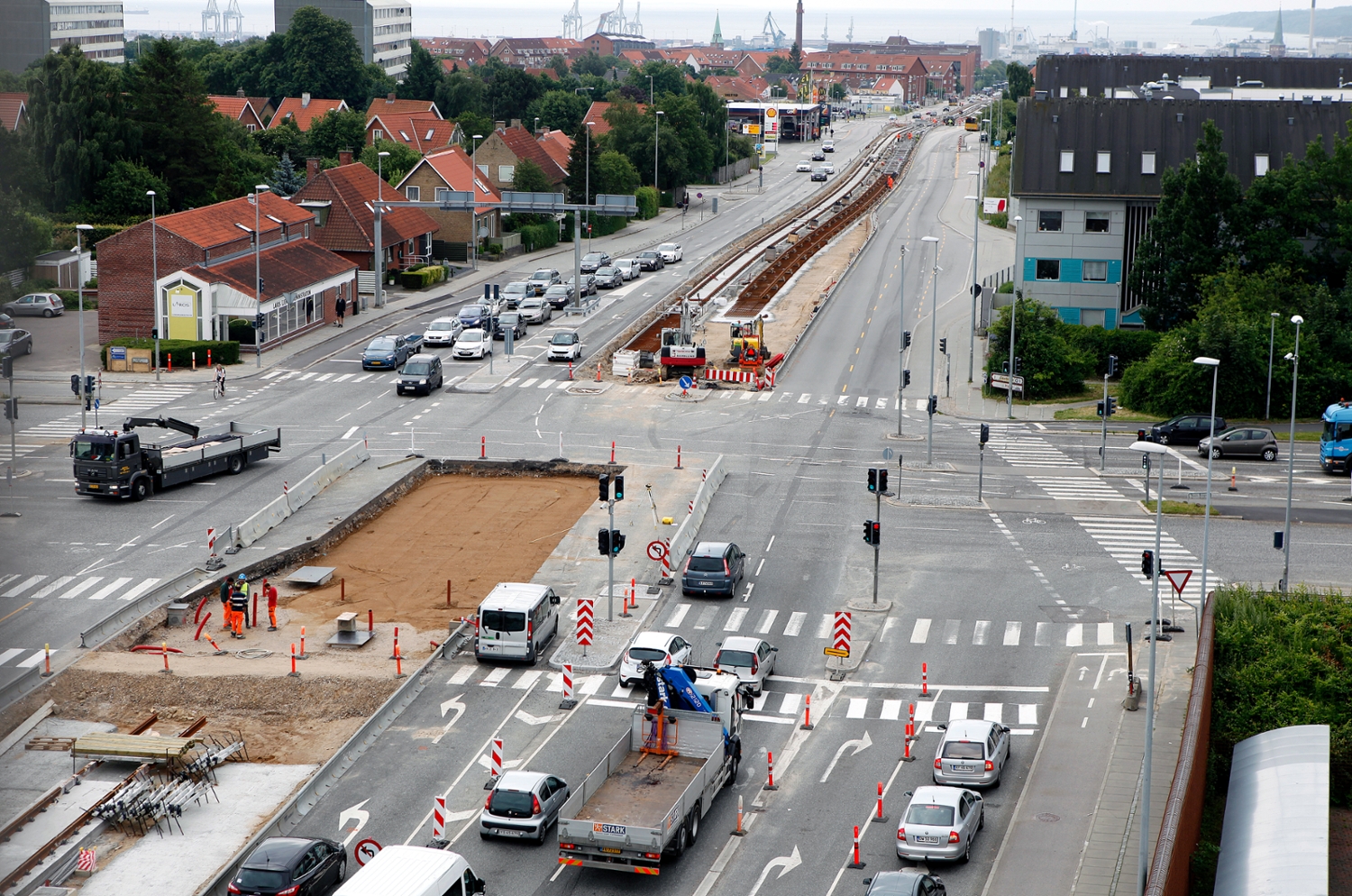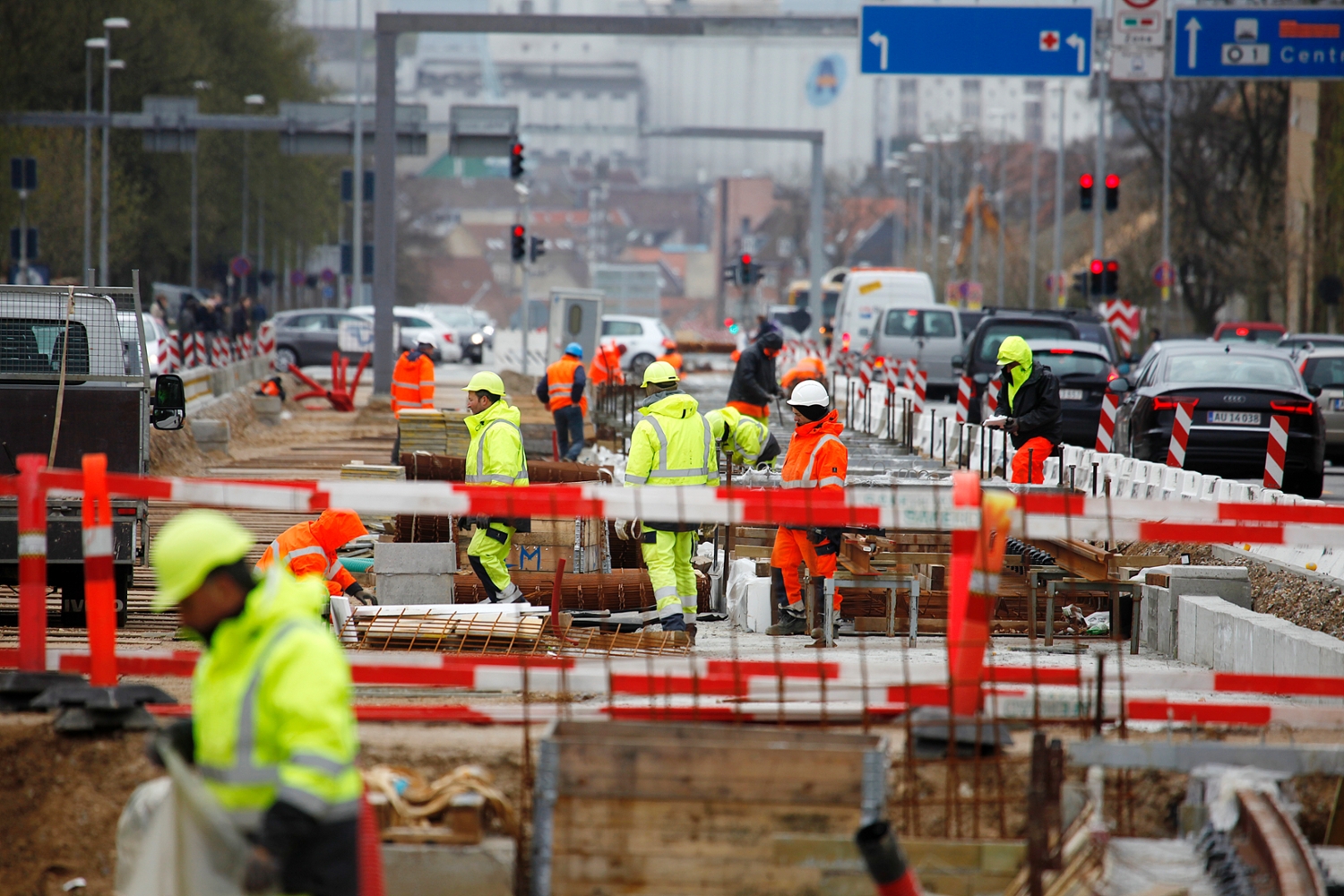Aarhus becomes the first Danish city to boast a tram system that provides increased mobility and saves emissions.
The first stage of the light rail will run 12 kilometres and has been named the “Urban Line,” since it remains mainly in the center of the city. This line starting from Aarhus central station will pass through key locations in the city before connecting an existing line that’s being converted for light rail operation, including a 70-kilometre line stretching north to Grenaa and a 30-kilometre stretch south to Odder.
Phase 1 will use 32 existing stops and add 17 new stops, while park and ride facilities near major stops have been refurbished. “We attempted to put stations where most people live to make this system as comfortable and accessible to citizens as possible” says Claus Rehfeld Moshøj, Aarhus Letbane’s Managing Director.
When Aarhus first wanted to understand the feasibility of a tram system, it found funding for the study from ELENA, a technical assistance programme that provides grants to finance project development costs. A joint initiative by the European Investment Bank and European Commission, the ELENA grant is restricted to projects dealing with energy efficiency or urban mobility. Every year, around EUR 20 million is available to support the development of projects.
Certainly Aarhus needed to tackle the effects of its growth. “Aarhus is very lively and getting more and more populated as surrounding areas are commuting in and out every day for work. Similarly to most cities, Aarhus is struggling with congestion, space and pollution. So it had to improve mobility,” explains Claus Klitholm, an urban mobility expert working for ELENA. “Thanks to ELENA, Aarhus Letbane has achieved substantial savings close to EUR 40,5 million. Also, ELENA funding has allowed Aarhus Letbane to better anticipate the conversion and electrification of existing railroads, which is a complex task and very little knowledge in that field existed in Denmark” he adds.
Aarhus received nearly EUR 2 million euros which financed technical studies to identify the most energy efficient way to power the tram. The grant not only ensured that the tram network would be as sustainable as possible but accelerated its implementation, which is considered essential to resolving the city’s congestion and support its growth. One of the project’s main objectives is indeed to cut traffic congestion in areas with high population growth. Once the new light rail service is operational, it is expected to carry 39,000 passengers daily at up to 100km per hour.
A light rail system will also be less harmful to the environment than road traffic. As it is driven by electricity, the system has the capacity to reduce energy consumption, noise and air pollution—the ELENA grant provided the finance for studies to identify the most energy-efficient way to power the project. The Aarhus Light Rail Project is estimated to contribute 47GW of annual energy savings and avoid 7,300 tonnes of CO² emissions each year.
The new light rail trains are powered by the Danish electricity grid, which generates 39 per cent of its power from wind turbines. The light rail system will therefore make a substantial contribution to Aarhus’s ambition to become CO2 neutral by 2030.

Claus Rehfeld Moshøj, Managing Director of Aarhus Letbane says the light rail will provide better services, routes and connections for passengers
The trains will be active for about 19 hours a day and will be parked overnight at a garage that protects them from harsh weather and thus makes it easier for them to warm up during winter and prevents overheating during summer. “To make this light rail as sustainable and environmentally friendly as possible, we also installed a roof on the garage that collects rainwater that will be used for washing the trains,” says Managing Director Rehfeld Moshøj.

The tracks on Randersvej in March 2017
The tram-train concept: a titanic yard

The construction of the tracks in one of the central intersections of Aarhus at Randersvej
A tram-train is a vehicle that can be operated in two transport modes: as a street tram serving city centres and also as a commuter train making use of the existing rail network. They must work on the grooved rails within the street tram network and also be able to interact correctly with switch and crossing equipment, as well as check rails on the mainline track.
Two new tunnels between Aarhus University and Aarhus University Hospital in Nørrebrogade have been constructed, and Randersvej and Nørrebrogade have been reduced in size to create space in between for the new double-track light rail line. The project also involved the construction of eight bridges on the new line and a bridge over Egådalen, measuring 347 metres in length and 17metres in width, the largest bridge built as part of the project.
“A major challenge of the project was to create a balance between light rail, dense urban infrastructure and other transport modes in the city, and to incorporate light rail alignment in the constricted urban space and narrow streets. ” says Rehfeld Moshøj.
A truly European project

An international team of Italians, Germans and Danish entrepreneurs have been working on the construction of Aarhus Letbane
A special purpose company called Aarhus Letbane owned by the City of Aarhus (47.2%), the Danish State (47%) and the Central Denmark Region (5.8%) was founded in August 2012 to implement the project. Aarhus Letbane signed a EUR 292m contract with Stadler Rail and Ansaldo STS, a German-Italian consortium to build and equip Phase 1 of the project. Stadler Pankow supplied the Variobahn trams, while Stadler Altenrhein provided the Tango tram-trains.
In less than four years, 19 civil work contracts ranging from bridge construction and line foundations have been achieved and predominately awarded to Danish companies.